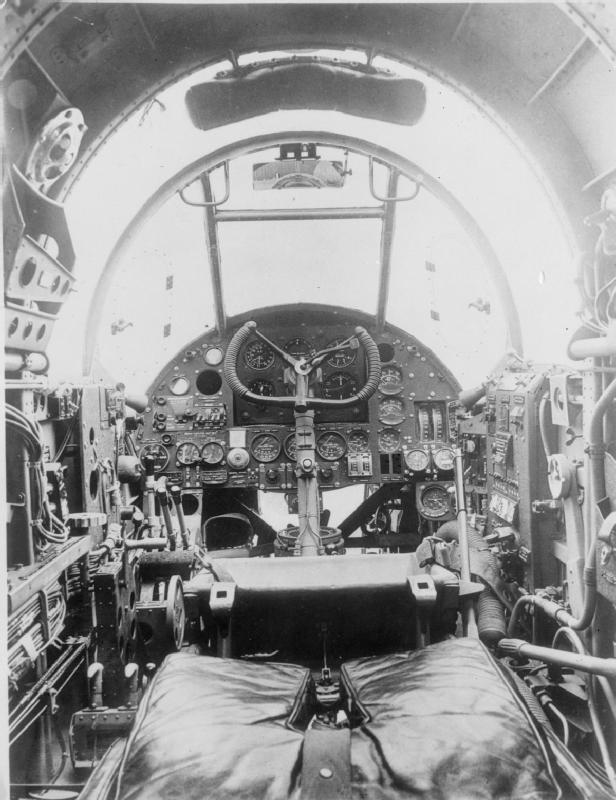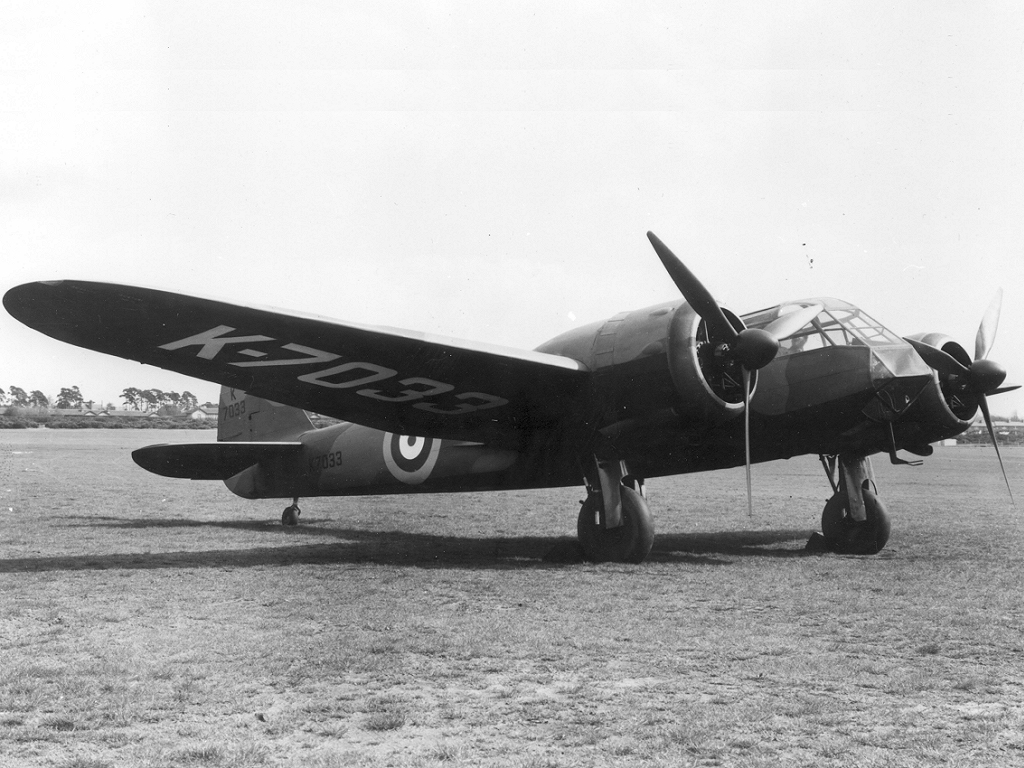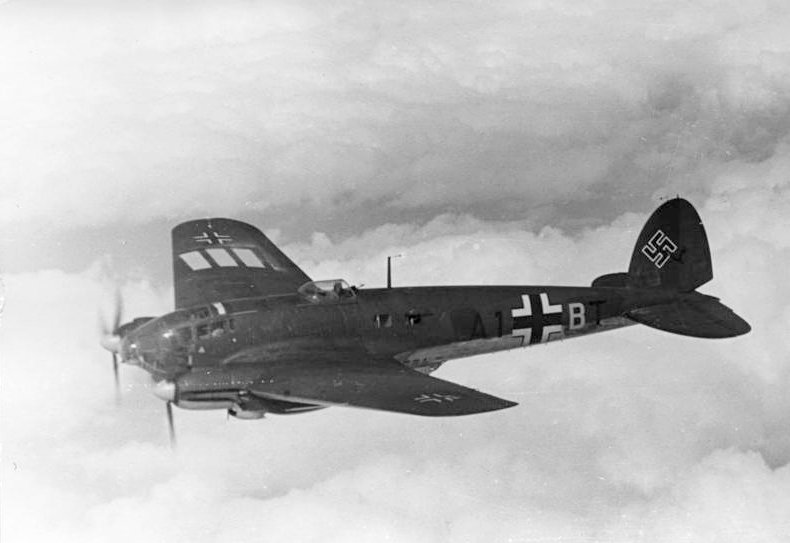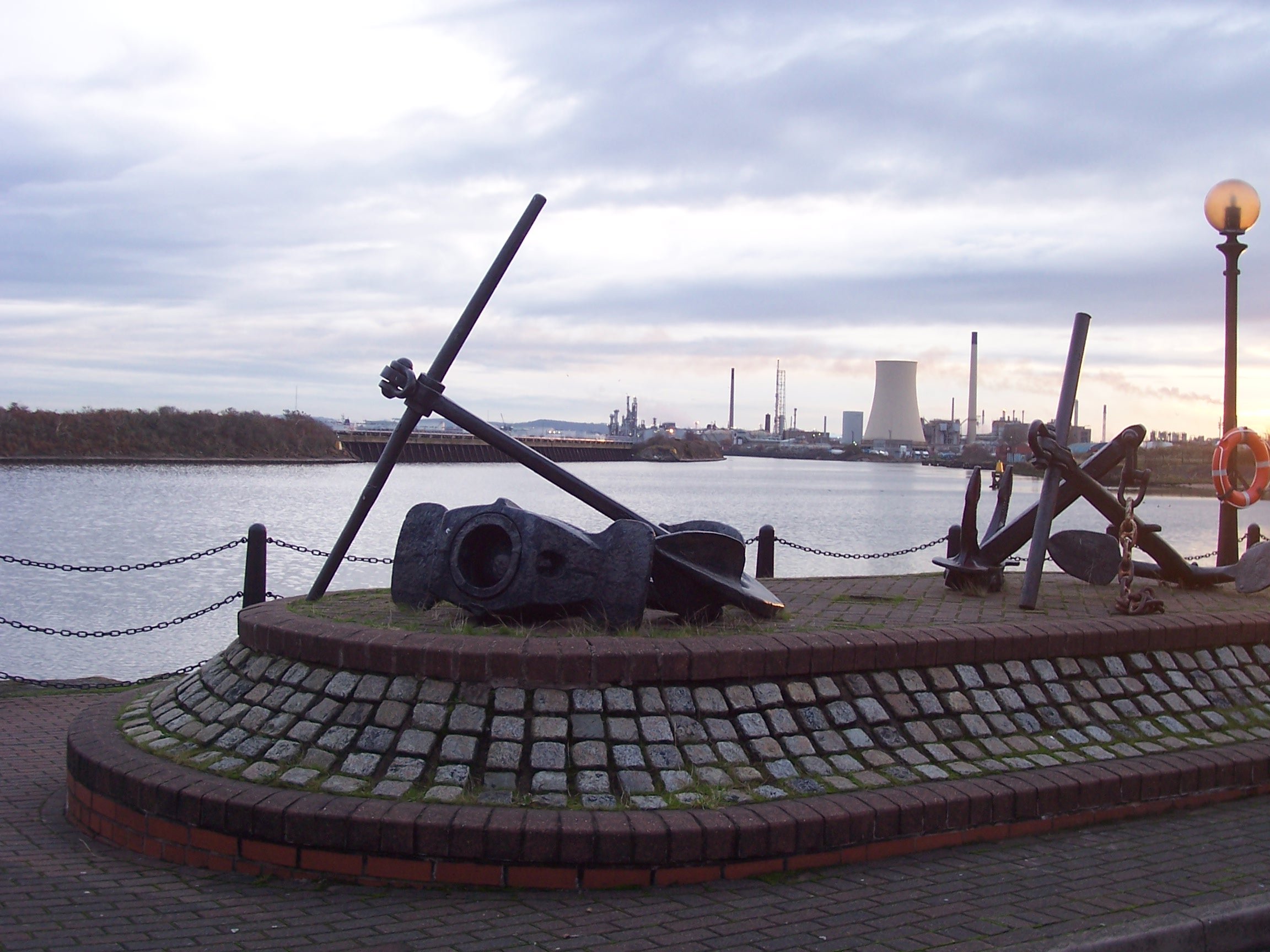|
RAF Upper Heyford
RAF Upper Heyford was a Royal Air Force station located north-west of Bicester near the village of Upper Heyford, Oxfordshire, England. In the Second World War the airfield was used by Bomber Command. During the Cold War, Upper Heyford was one of the former RAF bases chosen to house the United States Air Force Strategic Air Command (SAC) nuclear-capable bombers on 90-day TDY (Temporary Duty) deployments until 1959, SAC Reflex Alert deployments from 1959 until 1965, from 1966 United States Air Forces in Europe (USAFE) tactical reconnaissance aircraft, and from 1970 F-111 strike aircraft. Royal Air Force Work on clearing the site began on 1 June 1918 when a detachment of the Canadian Forestry Corps arrived after completing similar work at RAF Hooton Park, near Ellesmere Port. The station was opened in July 1918 by the Royal Air Force. In November the Canadian Air Force was formed at Upper Heyford, by renumbering two RAF squadrons and posting in Canadian pilots and observer ... [...More Info...] [...Related Items...] OR: [Wikipedia] [Google] [Baidu] |
Ensign Of The Royal Air Force
An ensign is the national flag flown on a vessel to indicate nationality. The ensign is the largest flag, generally flown at the stern (rear) of the ship while in port. The naval ensign (also known as war ensign), used on warships, may be different from the civil ensign (merchant ships) or the yacht ensign (recreational boats). Large versions of naval ensigns called battle ensigns are used when a warship goes into battle. The ensign differs from the jack, which is flown from a jackstaff at the bow of a vessel. In its widest sense, an ensign is just a flag or other standard. The European military rank of ensign, once responsible for bearing a unit's standard (whether national or regimental), derives from it (in the cavalry, the equivalent rank was cornet, named after a type of flag). Ensigns, such as the ancient Roman ensigns in the Arch of Constantine, are not always flags. National ensigns In nautical use, the ensign is flown on a ship or boat to indicate its organizati ... [...More Info...] [...Related Items...] OR: [Wikipedia] [Google] [Baidu] |
Strategic Air Command
Strategic Air Command (SAC) was both a United States Department of Defense Specified Command and a United States Air Force (USAF) Major Command responsible for command and control of the strategic bomber and intercontinental ballistic missile components of the United States military's strategic nuclear forces from 1946 to 1992. SAC was also responsible for the operation of strategic reconnaissance aircraft and airborne command post aircraft as well as most of the USAF's aerial refueling fleet, including aircraft from the Air Force Reserve (AFRES) and Air National Guard (ANG). SAC primarily consisted of the Second Air Force (2AF), Eighth Air Force (8AF) and the Fifteenth Air Force (15AF), while SAC headquarters (HQ SAC) included Directorates for Operations & Plans, Intelligence, Command & Control, Maintenance, Training, Communications, and Personnel. At a lower echelon, SAC headquarters divisions included Aircraft Engineering, Missile Concept, and Strategic Communicati ... [...More Info...] [...Related Items...] OR: [Wikipedia] [Google] [Baidu] |
Handley Page Hampden
The Handley Page HP.52 Hampden is a British twin-engine medium bomber that was operated by the Royal Air Force (RAF). It was part of the trio of large twin-engine bombers procured for the RAF, joining the Armstrong Whitworth Whitley and Vickers Wellington. The Hampden was powered by Bristol Pegasus radial engines but a variant known as the Handley Page Hereford had in-line Napier Daggers. The Hampden served in the early stages of the Second World War, bearing the brunt of the early bombing war over Europe, taking part in the first night raid on Berlin and the first 1,000-bomber raid on Cologne. When it became obsolete, after a period of mainly operating at night, it was retired from RAF Bomber Command service in late 1942. By 1943, the rest of the trio were being superseded by the larger four-engined heavy bombers such as the Avro Lancaster. Development Origins In 1932, the Air Ministry issued Specification B.9/32 seeking a twin-engined day bomber with higher performa ... [...More Info...] [...Related Items...] OR: [Wikipedia] [Google] [Baidu] |
Bristol Blenheim
The Bristol Blenheim is a British light bomber aircraft designed and built by the Bristol Aeroplane Company (Bristol) which was used extensively in the first two years of the Second World War, with examples still being used as trainers until the end of the war. Development began with the ''Type 142'', a civil airliner, in response to a challenge from Lord Rothermere to produce the fastest commercial aircraft in Europe. The ''Type 142'' first flew in April 1935, and the Air Ministry, impressed by its performance, ordered a modified design as the ''Type 142M'' for the Royal Air Force (RAF) as a bomber. Deliveries of the newly named Blenheim to RAF squadrons commenced on 10 March 1937. In service the Type 142M became the Blenheim Mk.I which would be developed into the longer Type 149, designated the Blenheim Mk.IV, except in Canada where Fairchild Canada built the Type 149 under licence as the Bolingbroke. The Type 160 Bisley was also developed from the Blenheim, but was already o ... [...More Info...] [...Related Items...] OR: [Wikipedia] [Google] [Baidu] |
German Rearmament
German rearmament (''Aufrüstung'', ) was a policy and practice of rearmament carried out in Germany during the interwar period (1918–1939), in violation of the Treaty of Versailles which required German disarmament after WWI to prevent Germany from starting another war. It began on a small, secret, and informal basis shortly after the treaty was signed, but it was openly and massively expanded after the Nazi Party came to power in 1933. Despite its scale, German re-armament remained a largely covert operation, carried out using front organizations such as glider clubs for training pilots and sporting clubs, and Nazi SA militia groups for teaching infantry combat techniques. Front companies like MEFO were set up to finance the rearmament by placing massive orders with Krupp, Siemens, Gutehofnungshütte, and Rheinmetall for weapons forbidden by the Treaty of Versailles. Carl von Ossietzky exposed the reality of the German rearmament in 1931 and his disclosures won him ... [...More Info...] [...Related Items...] OR: [Wikipedia] [Google] [Baidu] |
RAF Bircham Newton
Royal Air Force Bircham Newton or more simply RAF Bircham Newton is a former Royal Air Force station located south east of Docking, Norfolk and north east of King's Lynn, Norfolk, England. History The site was first used during the First World War and received the largest British bomber of the time, the Handley Page V/1500. They would have carried out bombing missions against Berlin but the Armistice was arranged before any missions were actually flown. There were several communication squadrons active at the airfield during 1919. The airfield was equipped with one aircraft repair shed and three double bay general service sheds, although these had been demolished by 1937. It had two Belfast hangars, three C Type hangars, three Bellman hangars and ten Blister hangars. It operated through the Second World War as part of No. 16 Group RAF as part of RAF Coastal Command. No. 206 Squadron RAF was one of the squadrons being based there, on maritime patrol duties. Two satellit ... [...More Info...] [...Related Items...] OR: [Wikipedia] [Google] [Baidu] |
Oxford University Air Squadron
The Oxford University Air Squadron, abbreviated Oxford UAS, or OUAS, formed in 1925, is the training unit of the Royal Air Force at the University of Oxford and forms part of the Royal Air Force Volunteer Reserve. OUAS is one of fifteen University Air Squadrons that are spread out across Great Britain and it recruits from the universities at Oxford (Oxford University and Oxford Brookes) and Reading University. Present day University Air Squadrons offer basic flying training and adventure training to undergraduates and graduates and encourage members to take up a career as an officer in one of the branches of the Royal Air Force. Some members of OUAS hold the title of Officer Cadet, which carries the privileges, but not the rank, of a commissioned officer, while some other members are also granted commissions in the RAF Volunteer Reserve, with the rank of Acting Pilot Officer. Officer Cadets are required to attend a minimum of one training night a week during full term, usual ... [...More Info...] [...Related Items...] OR: [Wikipedia] [Google] [Baidu] |
Occupation Of The Rhineland
The Occupation of the Rhineland from 1 December 1918 until 30 June 1930 was a consequence of the collapse of the Imperial German Army in 1918, after which Germany's provisional government was obliged to agree to the terms of the 1918 armistice. This included accepting that the troops of the victorious powers occupied the left bank of the Rhine and four right bank "bridgeheads" with a radius around Cologne, Koblenz, Mainz and a radius around Kehl. Furthermore, the left bank of the Rhine and a strip east of the Rhine was declared a demilitarized zone. The Treaty of Versailles repeated these provisions, but limited the presence of the foreign troops to fifteen years after the signing of the treaty (until 1934). The purpose of the occupation was on the one hand to give France security against a renewed German attack, and on the other to serve as a guarantee for reparations obligations. After this was apparently achieved with the Young Plan, the occupation of the Rhinela ... [...More Info...] [...Related Items...] OR: [Wikipedia] [Google] [Baidu] |
New College, Oxford
New College is one of the constituent colleges of the University of Oxford in the United Kingdom. Founded in 1379 by William of Wykeham in conjunction with Winchester College as its feeder school, New College is one of the oldest colleges at the university and was the first to admit undergraduate students. New College also has a reputation for the exceptional academic performance of its students. In 2020, the college ranked first in the Norrington Table, a table assessing the relative performance of Oxford's undergraduates in final examinations. It has the 2nd-highest average Norrington Table ranking over the previous decade. The college is located in the centre of Oxford, between Holywell Street and New College Lane (known for Oxford's Bridge of Sighs), next to All Souls College, Harris Manchester College, Hertford College, The Queen's College and St Edmund Hall. The college's sister college is King's College, Cambridge. The college choir is one of the leading cho ... [...More Info...] [...Related Items...] OR: [Wikipedia] [Google] [Baidu] |
RAF Halton
Royal Air Force Halton, or more simply RAF Halton, is one of the largest Royal Air Force stations in the United Kingdom. It is located near the village of Halton near Wendover, Buckinghamshire. The site has been in use since the First World War but is due to close by December 2027. The Queen Consort is the Honorary Air Commodore of RAF Halton. History The first recorded military aviation at Halton took place in 1913 when the then owner of the Halton estate, Alfred de Rothschild, invited No 3 Squadron of the Royal Flying Corps to conduct manoeuvres on his land. Following a gentlemen's agreement between Rothschild and Lord Kitchener, the estate was used by the British Army throughout the First World War. In 1916 the Royal Flying Corps moved its air mechanics school from Farnborough, Hampshire to Halton, and in 1917, the school was permanently accommodated in workshops built by German PoWs. The estate was purchased by the British Government for the nascent Royal Air Fo ... [...More Info...] [...Related Items...] OR: [Wikipedia] [Google] [Baidu] |
Canadian Air Force (1918–1920)
The Canadian Air Force (CAF) was a contingent of two Canadian air force squadrons – one fighter and one bomber – authorized by the British Air Ministry in August 1918 during the close of the First World War. The unit was independent from the Canadian Expeditionary Force and the Royal Air Force (RAF). In addition to the two squadrons, a CAF Directorate of Air Services was formed, which was a branch of the ''General Staff of the Overseas Military Forces of Canada''. The CAF's first commander, Lt. Col. W. A. Bishop began setting up the squadrons in August 1918. The two squadrons never fought during the war, which ended on 11 November 1918. The squadrons were administered by No. 1 Wing CAF, which was formed in March 1919. Both squadrons were stationed in the United Kingdom at Upper Heyford and later, Shoreham-By-Sea, Sussex. All aircraft, equipment and training facilities were provided by Britain. Recruiting, pay and clothing, however, was a Canadian responsibility. The Bri ... [...More Info...] [...Related Items...] OR: [Wikipedia] [Google] [Baidu] |
Ellesmere Port
Ellesmere Port ( ) is a port town in the Cheshire West and Chester borough in Cheshire, England. Ellesmere Port is on the south eastern edge of the Wirral Peninsula, north of Chester, south of Birkenhead, southwest of Runcorn and south of Liverpool. The town had a population of 61,090 in the 2011 census. Ellesmere Port also forms part of the wider Birkenhead urban area, which had a population of 325,264 in 2011. The town was originally established on the River Mersey at the entrance to the Ellesmere Canal. As well as a service sector economy, it has retained large industries including Stanlow oil refinery, a chemical works and the Vauxhall Motors car factory. There are also a number of tourist attractions including the National Waterways Museum, the Blue Planet Aquarium and Cheshire Oaks Designer Outlet. History The town of Ellesmere Port was founded at the outlet of the never-completed Ellesmere Canal. The canal (now renamed) was designed and engineered by ... [...More Info...] [...Related Items...] OR: [Wikipedia] [Google] [Baidu] |







